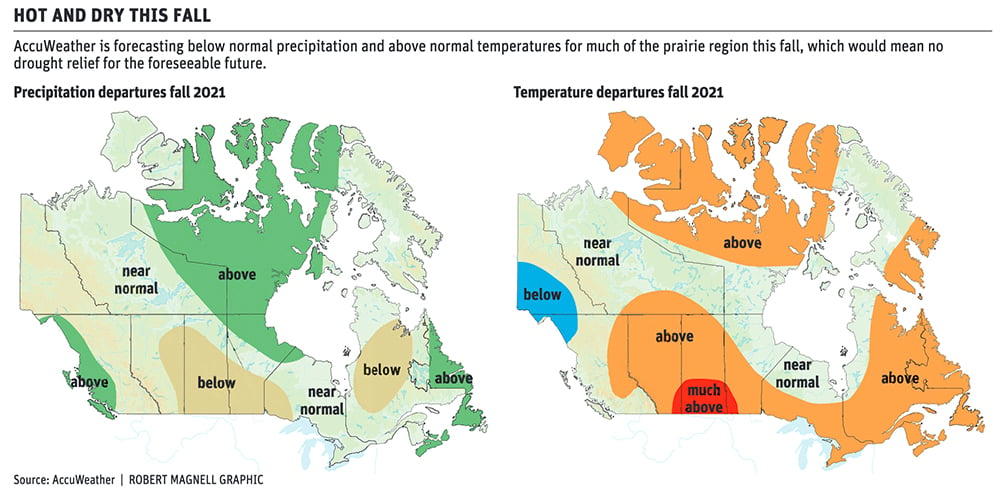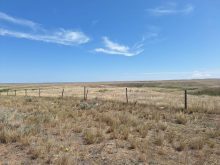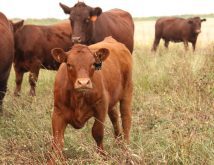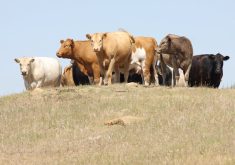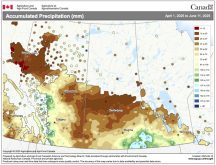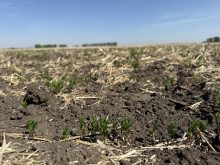AccuWeather says expectation for warmer and drier conditions is particularly pronounced in most of the southern Prairies
Just as parched soils in some of the worst drought-affected regions of the Canadian Prairies were getting some reprieve, along comes a disheartening forecast.
AccuWeather predicts hot and dry conditions for September through November.
“The overall pattern does not favour much in the way of precipitation here across the southern Prairies and certainly a continuation of the warm, above-normal temperatures,” said senior meteorologist Brett Anderson.
He credits La Nina for those grim tidings. AccuWeather believes a weak La Nina weather event has already formed and will continue to strengthen throughout fall.
Read Also

Farming Smarter receives financial boost from Alberta government for potato research
Farming Smarter near Lethbridge got a boost to its research equipment, thanks to the Alberta government’s increase in funding for research associations.
It will direct the storm track into the northern prairie region, keeping the southern Prairies under a southwestern flow of air.
“That will favour warmer and drier conditions compared to normal across the Prairies,” he said.
The situation is expected to be particularly dire in southern Saskatchewan, southeast Alberta and southwest Manitoba.
Todd Lewis, president of the Agricultural Producers Association of Saskatchewan, said much of southern Saskatchewan and Manitoba received significant rainfall in the last half of August.
“It certainly hasn’t broken the drought but has replenished the top part of the subsoil moisture,” he said.
The deep cracks in the clay soil on his farm near Gray, Sask., have sealed up and there has been a regrowth of wild oats and other weeds because pre-harvest spraying didn’t happen this year.
So he hopes the AccuWeather forecast proves incorrect.
The United States National Oceanic and Atmospheric Administration disagrees with AccuWeather. It says La Nina has not yet developed but there is a 70 percent chance it will by November.
It is forecasting drier than average conditions for the eastern Prairies but no real temperature bias.
Environment Canada’s seasonal forecast is due to be published Sept. 1, after The Western Producer’s publication deadline.
Agriculture Canada meteorologist Terri Lang said early indications are that the fall will be warmer than average with equal chances of wetter or drier than normal conditions.
So essentially, the fall forecasts are all over the map. But Lang said that is to be expected following an upside-down summer where the conditions in late-August are what should have occurred in June and July.
Manitoba was the big winner with the late August rainfall but southeastern Saskatchewan and southwestern Alberta also greatly benefitted.
Other areas like western Saskatchewan and eastern Alberta were not so fortunate, although another system was supposed to provide some relief to central Saskatchewan early this week.
AccuWeather expects fall precipitation to be about 70 percent of normal in southern Saskatchewan and 80 to 90 percent of average throughout much of the remainder of the Prairies.
Average fall temperatures are likely to be about 3 C above normal, which is quite significant.
The hot and dry conditions are likely to be accompanied by strong chinook winds spilling over the Rocky Mountains and across southern Alberta and into southwestern Saskatchewan.
If there is any good news in the forecast, it’s that the first fall frost is likely to be later than normal. However, a big high pressure system could come down from the north on any given day, causing crops to freeze.
Lewis said harvest is early this year. A lot more of the crop than usual is already in the bin and most of the cereal crops have ripened.
“I don’t think frost would have any real major impact,” he said.
“It would hurt some of those late-seeded crops but overall the majority of the crop is out of danger.”
Unfortunately, that wasn’t the case for harvest rains. While most of the lentils in the bin are No. 1, the crop that was left out in the field will be No. 3 or better due to wrinkling and discolouration, he said.
The same goes for durum, with much of the remaining crop in the fields being downgraded as low as No. 4 or No. 5, said Lewis.
Most of the cereals are standing rather than lying down in swaths like the “old days” so they will hopefully escape much quality damage, said Lewis.
For more content related to drought management visit The Dry Times, where you can find a collection of stories from our family of publications as well as links to external resources to support your decisions through these difficult times.




